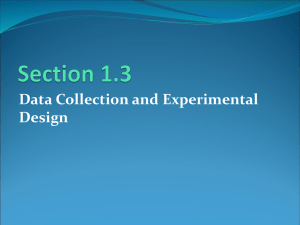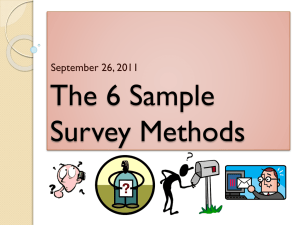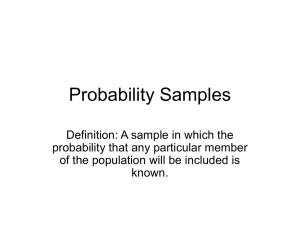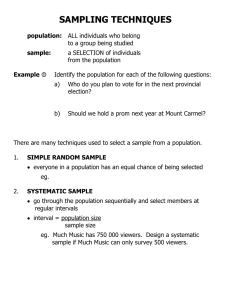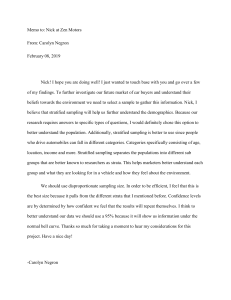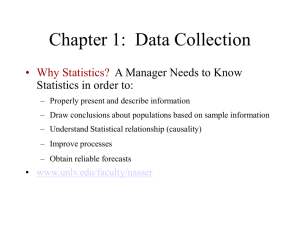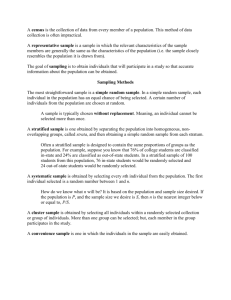Sampling techniques: Advantages and disadvantages
advertisement
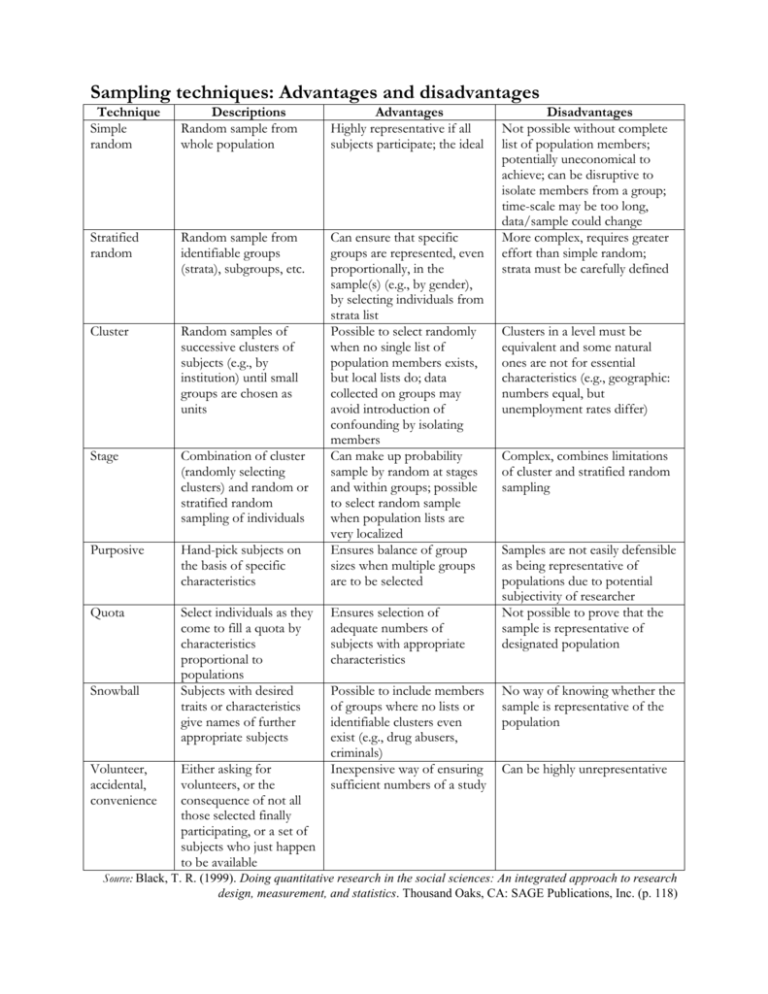
Sampling techniques: Advantages and disadvantages Technique Simple random Descriptions Random sample from whole population Advantages Highly representative if all subjects participate; the ideal Stratified random Random sample from identifiable groups (strata), subgroups, etc. Cluster Random samples of successive clusters of subjects (e.g., by institution) until small groups are chosen as units Stage Combination of cluster (randomly selecting clusters) and random or stratified random sampling of individuals Purposive Hand-pick subjects on the basis of specific characteristics Can ensure that specific groups are represented, even proportionally, in the sample(s) (e.g., by gender), by selecting individuals from strata list Possible to select randomly when no single list of population members exists, but local lists do; data collected on groups may avoid introduction of confounding by isolating members Can make up probability sample by random at stages and within groups; possible to select random sample when population lists are very localized Ensures balance of group sizes when multiple groups are to be selected Quota Select individuals as they come to fill a quota by characteristics proportional to populations Subjects with desired traits or characteristics give names of further appropriate subjects Snowball Volunteer, accidental, convenience Either asking for volunteers, or the consequence of not all those selected finally participating, or a set of subjects who just happen to be available Ensures selection of adequate numbers of subjects with appropriate characteristics Possible to include members of groups where no lists or identifiable clusters even exist (e.g., drug abusers, criminals) Inexpensive way of ensuring sufficient numbers of a study Disadvantages Not possible without complete list of population members; potentially uneconomical to achieve; can be disruptive to isolate members from a group; time-scale may be too long, data/sample could change More complex, requires greater effort than simple random; strata must be carefully defined Clusters in a level must be equivalent and some natural ones are not for essential characteristics (e.g., geographic: numbers equal, but unemployment rates differ) Complex, combines limitations of cluster and stratified random sampling Samples are not easily defensible as being representative of populations due to potential subjectivity of researcher Not possible to prove that the sample is representative of designated population No way of knowing whether the sample is representative of the population Can be highly unrepresentative Source: Black, T. R. (1999). Doing quantitative research in the social sciences: An integrated approach to research design, measurement, and statistics. Thousand Oaks, CA: SAGE Publications, Inc. (p. 118)
